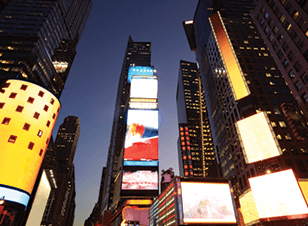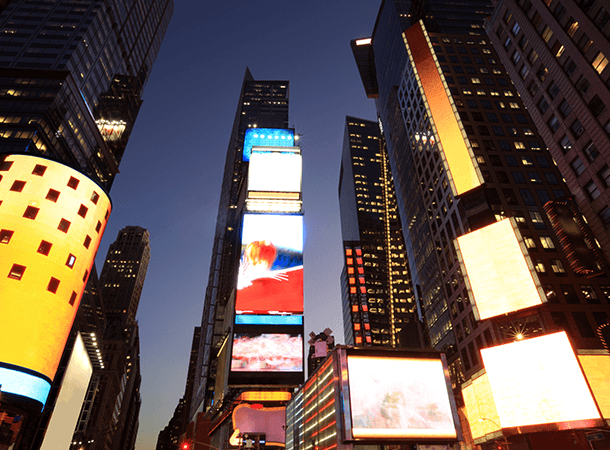 Never will there be another dull sign! With great technology now so readily available, large format printing has more visual appeal and promotional potential than ever.
Never will there be another dull sign! With great technology now so readily available, large format printing has more visual appeal and promotional potential than ever.
Whether it is a banner, billboard or business presentation, making your brand’s message high priority with large format printing offers huge benefits, like massive audience reach and lasting visual impressions.
To prepare a file for output to a large format printer, the rules of traditional printing don’t necessarily apply and many special considerations need to be made. In this post, we explore the 3 things you need to know before designing for large format printing.
1. The Solution to Resolution
The first thing to take into consideration when it comes to resolution is that your banners, exhibition displays and other large printing formats are going to be viewed from far away. This means that you need to consider viewing distance as a huge factor when deciding on resolution.
One measure used to determine resolution in large format printing is called dots per inch (DPI.) Dots per inch is simply the number of individual dots that can fit within one inch of a digital print.
The following guide acts as a benchmark for establishing DPI based on viewing distance:
- Close – 0.5-1m, 200 dpi
- Close to medium – 1-3m, 150 dpi
- Medium to far – 3-6m, 100 dpi
- Far – 6m, 75 dpi
Alternatively, lines per inch (LPI) is another measurement of printing resolution that measures how close together the lines in a halftone grid are. LPI is a great option for things like magazines and newspapers or other commercial offset printing that use a halftone system.
2. Which File Format?
With so many file formats to choose from, it’s hard to tell how you should save your file. In general, TIFF or EPS files are the preferred format of large format printing.
- TIFF (Tagged Image File Format): Great for producing large files without sacrificing quality. This format preserves special features like layers and transparency when saved from Photoshop.
- EPS (Encapsulated PostScript): EPS is one of the most versatile file formats around and can contain combinations of text, graphics and images. It’s used for vector-based images in Adobe Illustrator.
Overall, your file format is going to depend on the printer and their file specs so make sure to contact your printer to discuss how they want you to set up the file.
Most importantly, make sure you keep an editable version of your work before sending the finished product to the printer!
3. Sizing
To print big, you have to scale it down. Requirements of certain dimensions will vary according to the program you wish to use, however it’s generally a good idea to use a vector program that allows you to work at a smaller scale, like ½ or ¼ and then having the printer scale it up.
For best results, try printing a smaller scaled version yourself before sending your final product to the printer. This will help you catch any major or minor issues before it’s too late! Our quick paper size guide can help you choose specific dimensions when it comes time to test your poster designs.
In addition to these top 3 requirements, remember to regularly view your work from far away throughout the design process to ensure it has the impact you’re after.
Ready to embrace large format printing? Find out how we can help bring your large format signage vision to life!






